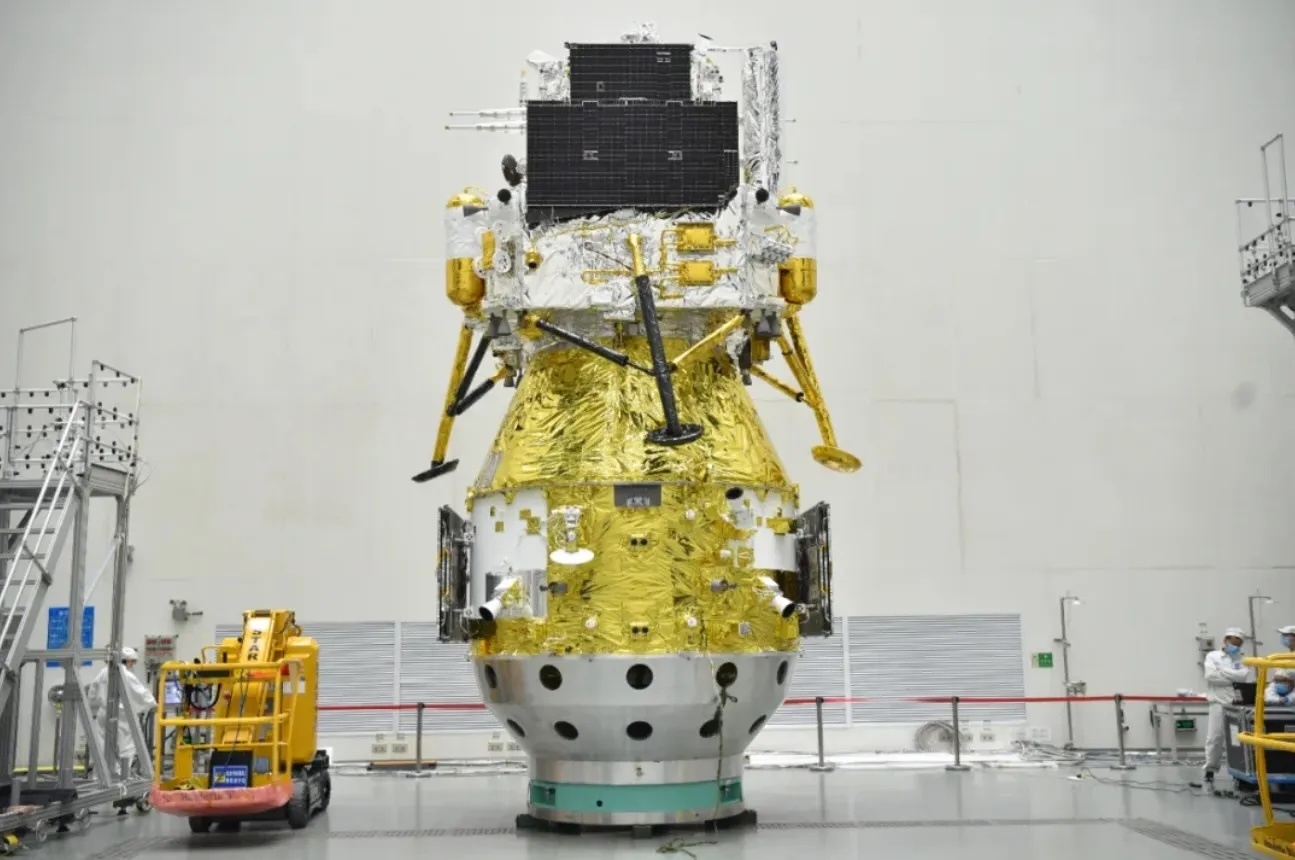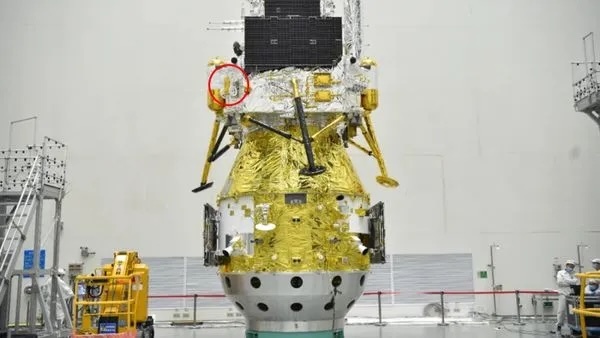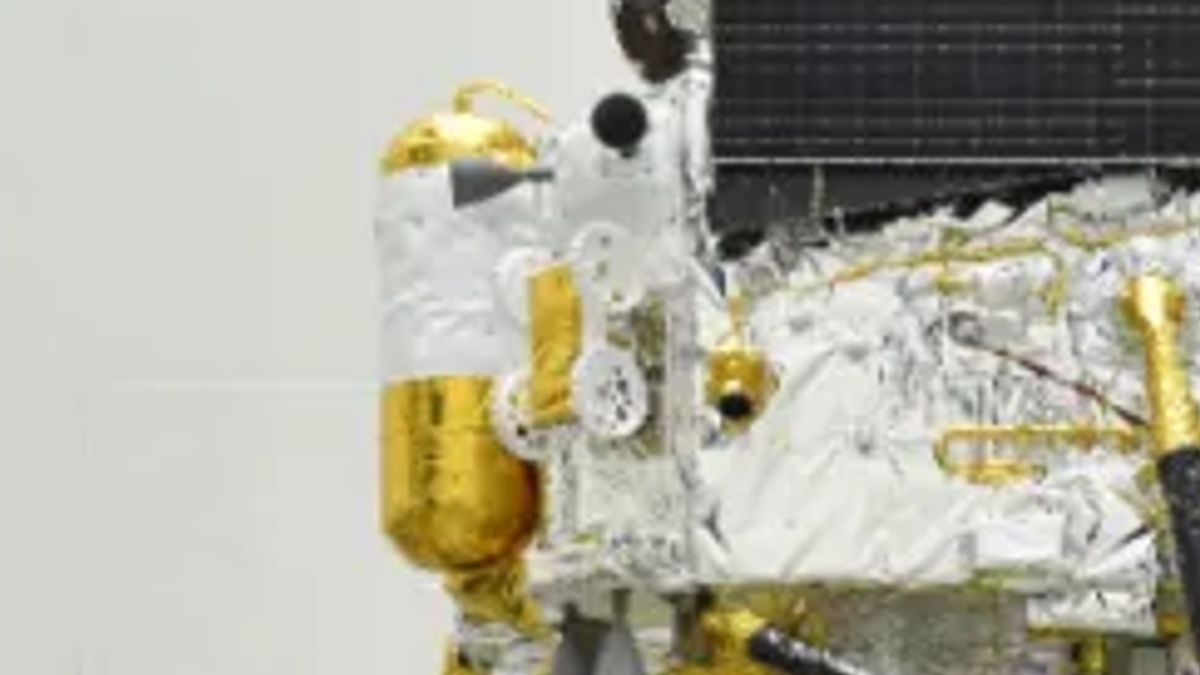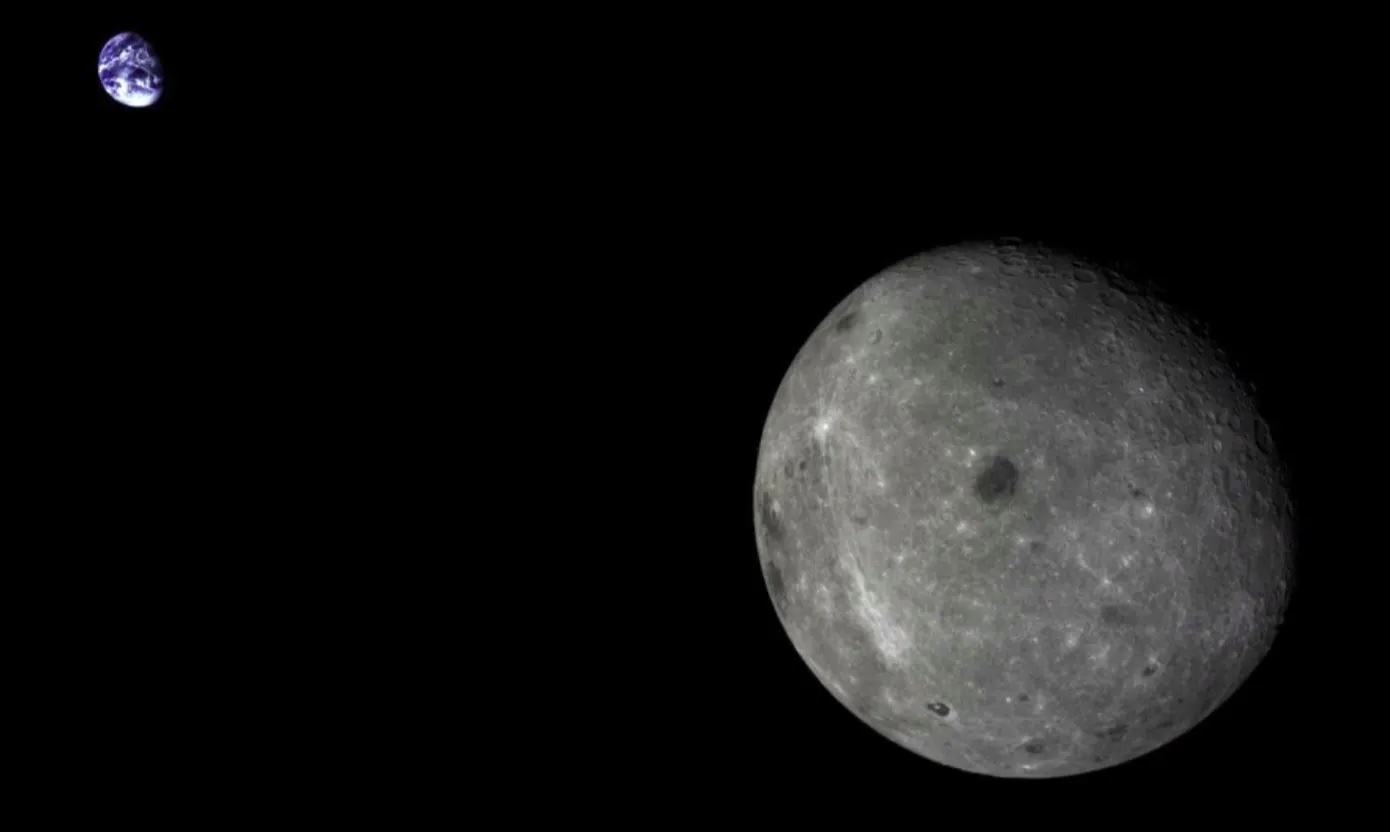5.05.2024
China launches Chang'e 6 lunar probe, revving up space race with U.S.

WENCHANG SPACE LAUNCH SITE, China — China launched an uncrewed lunar spacecraft Friday in a first-of-its-kind mission to bring back samples from the far side of the moon, the latest step in a rapidly advancing Chinese space program that is spurring competition with the United States and others.
The Chang’e 6 lifted off on time at 5:27 p.m. local time (5:27 a.m. ET) from the Wenchang Space Launch Site in China’s southern island province of Hainan.
The launch of the lunar probe, which NBC News was one of a handful of news organizations to attend, and the national excitement around it had transformed the normally sleepy fishing village of Longlou into a major tourist attraction, with crowds spilling from tour buses and heading to beaches and rooftops with the best views of the spaceport. One rooftop owner said he had sold out 200 seats at 200 yuan (about $28) each.
Ahead of the launch there was a festival-like atmosphere on the beach, where vendors offered space paraphernalia and groups of children sold Chinese flags for 3 yuan (about 40 cents) each. Families sprawled on picnic blankets playing cards, while others strung up hammocks between palm trees so they could wait in the limited shade.
Yiuwah Ng, a 28-year-old real estate office worker from the southern Chinese city of Zhuhai, traveled six hours by car and another three hours by ferry to stake out the best spot along the shore, where he had been camping for three days with friends and his dog.
“I want to witness this historic moment,” he said of the launch, his fourth. “It’s an important first step for China’s lunar exploration.”
Max Zhang, a self-described “rocket chaser” from the southern Chinese city of Guangzhou, has been photographing launches at Wenchang from the beach since 2011.
“I’m addicted to the shock of seeing the launches, especially the sound of the rocket flame,” he said. “It shakes my heart.”
‘A force to be reckoned with’
If successful, the Chang’e mission will be a crucial step in realizing the country’s goals of landing Chinese astronauts on the moon by 2030 and eventually building a base on the lunar surface.
The outcome of the mission will also have implications far beyond China’s borders. A slew of spacefaring nations — including Russia, India, Japan and the U.S. — also have their sights set on the moon, creating what some experts have likened to a new kind of space race.
“China is trying to prove that it’s a force to be reckoned with, and so it’s always that China is competing against everyone in space,” said Clayton Swope, deputy director of the Aerospace Security Project at the Center for Strategic and International Studies in Washington.
A successful Chang’e 6 mission would demonstrate how sophisticated China’s lunar exploration program has become in a relatively short time.
“Twenty-five years ago, they had very rudimentary space capabilities,” said Todd Harrison, a senior fellow at the American Enterprise Institute, a public policy think tank based in Washington. “Going from that to where they are today — I think they’ve clearly exceeded Russia, and their space capabilities are really only second to the United States.”
China achieved its first moon landing in 2013 with the Chang’e 3 mission, which set a lander and rover on the lunar surface to study the moon’s terrain. Before that, only the U.S. and the former Soviet Union had successfully landed spacecraft on the moon.
In 2019, China notched another historic milestone with its Chang’e 4 flight, becoming the first country to land a probe on the far side of the moon, the part that permanently faces away from Earth.
The following year, in 2020, China returned to the moon’s near side, which always faces Earth, landing the Chang’e 5 spacecraft on a volcanic plain known as Oceanus Procellarum. The probe retrieved samples there and brought them back to Earth, representing a big technological leap forward.
The China National Space Administration (CNSA) has invited scientists from the U.S., Europe and Asia to apply to borrow the lunar samples for their own research, holding a pitch meeting last week in the Chinese city of Wuhan. Researchers funded by NASA received rare approval from Congress to submit proposals, raising the possibility of high-level U.S.-China space cooperation that is otherwise prohibited by U.S. law.
This time, the Chang’e 6 spacecraft is aiming to land and retrieve samples from the South Pole-Aitken basin, an ancient and sprawling impact crater on the far side of the moon.
Conducting a sample return mission from the side of the moon that always faces away from Earth is challenging because mission controllers on the ground have no way of directly contacting a spacecraft in that region. Instead, signals need to be relayed through a satellite now orbiting the moon that China launched from the same site in Hainan last month.
While difficult, the effort could have enormous payoffs. Studies suggest that the moon’s near side was more volcanically active than the far side, which means all of the lunar samples obtained thus far may be telling only part of the story of the moon’s origin and evolution.
Collecting lunar samples from different geological eras and regions “is of great value and significant for all mankind to have a more comprehensive understanding of the moon and even the origin of the solar system,” Ge Ping, a mission leader from CNSA’s Lunar Exploration and Space Engineering Center, told reporters in Hainan on Thursday.
Beyond its scientific objectives, the Chang’e 6 mission carries with it geopolitical considerations. The flight is a precursor to a pair of Chinese robotic missions to the moon’s south pole to scout locations to build a moon base. Last year, the Chinese and Russian space agencies agreed to jointly build a research station on the lunar surface.
NASA and its commercial partners also aim to establish a permanent presence at the lunar south pole, though the agency’s Artemis moon missions have faced numerous delays and budget overruns. The current timeline has American astronauts returning to the lunar surface in 2026 at the earliest.
With China and Russia forming a rival coalition, there is some pressure for the U.S. to keep its foot on the accelerator, Harrison said.
“It does matter who gets there first, and it matters how you get there and what kind of coalition you’re bringing with you,” he said.
NASA Administrator Bill Nelson has on multiple occasions warned that the U.S. runs the risk of falling behind China’s lunar ambitions. In an interview this week with Yahoo Finance, Nelson outlined what’s at stake in the new space race.
“I think it’s not beyond the pale that China would suddenly say, ‘We are here. You stay out,’” he said.
Asked Thursday about international competition in space, Ge said, “All countries in the world should explore, develop and use outer space peacefully.”
“There is no need to worry too much,” he added. “Space programs are for all humans.”
As more countries around the world build up space capabilities, NASA has pushed for more global cooperation, establishing theArtemis Accords in 2020 to promote peaceful, responsible and sustainable practices. U.S. law prevents China from joining the 39 other nations that have signed the accords, which both China and Russia have criticized as a tool to promote U.S. dominance in space.
Many Western space policy experts have in turn raised concerns about China’s and Russia’s intentions. The full scope of China’s ambitions in space is not known, for instance, because its space agency does not operate with the same level of transparency as NASA. The country’s space program is also more closely tied to the military than in the U.S.
“We cannot ever say that China’s investment in civilian space technologies are only civilian and not to be used for military purposes,” said Namrata Goswami, a professor in the Thunderbird School of Global Management at Arizona State University and co-author of the 2020 book “Scramble for the Skies: The Great Power Competition to Control the Resources of Outer Space.”
While it may feel as if China’s spaceflight objectives have accelerated in recent years, they are part of a decadeslong strategy, Goswami said.
“Many of the leaders of China’s space program announced these goals and timelines 20 years ago,” she said. “What is astounding to me is that they are achieving almost all their milestones on time, and for them, that has a strategic advantage in the global narrative of who’s doing it better.”
As much as the moon and its resources can provoke competition among nations, space exploration can also be unifying, Swope said.
“We are literally a speck in the universe, and when we go to the moon or explore space, we as humankind have that shared human trait where we want to understand the unknown and we want to discover,” he said. “That does transcend politics.”
Quelle: NBC News
+++
CHINA'S CHANG'E 6 MISSION HEADS TO THE MOON
China’s ambitious Chang’e 6 mission will attempt to return a sample from the lunar farside.
A massive Long March 5 rocket lit up the skies over Wenchang Space Center on Hainan Island in China early this morning, carrying China’s 2024 lunar bid: the Chang’e 6 sample-return mission.Watch the launch here:
Liftoff occurred at 5:27 a.m. EDT / 9:27 UT, and Chang'e 6 and the upper stage booster separated shortly after launch. Controllers report the mission is in good health.

CASC / CAS
THE MISSION TIMELINE
The plan for Chang’e 6 is a 53-day long mission with the goal of returning 2 kilograms (4.4 pounds) of soil by June. The targeted landing site is the Apollo Basin on the lunar farside.
Scientists obtained their first blurry views of the lunar farside with USSR's Luna 3 flyby in 1959, which revealed a region decidedly different from the nearside: There were almost no maria or ancient lava flows, and far more craters than expected. NASA’s GRAIL missions showed that the farside’s crust is actually thicker than the nearside crust by about 20 kilometers.
Most recently, China's Chang’e 4 mission performed the first soft landing on the farside, exploring the area near the lunar south pole with a rover and returning images of its landing site in Von Kármán Crater in the South Pole-Aitken Basin. Now, with Chang’e 6’s sample return,scientists hope to better understand the history and formation of the Moon.

THE CHANG’E PROGRAM
The Chang’e series takes its name from the Chinese moon goddess. China has taken a slow, incremental approach to space missions, and the Moon is no exception. The first two missions in the lunar series, Chang’e 1 and 2, were orbiters, followed by the nation’s first lander and rovers, Chang’e 3 and 4. Then, in 2020, China completed its first automated lunar sample return with Chang’e 5, which touched down at Mons Rümker (on the nearside) and brought back a sample in a whirlwind 24-day mission.

ESA
Now, Chang’e 6 will synthesize the lessons learned on previous missions, entering orbit around the Moon in preparation for a landing and sample return from the farside. Earlier this year, China also launched the Queqiao 2 relay orbiter to the Earth-Moon L2 Lagrange point, where it has line of sight contact with both the lander and Earth to facilitate communications with the Moon's farside.

CNSA
The scenario for sample return is complex. Unlike automated Soviet returns in the Luna program, which simply returned directly to Earth, the ascent stage for Chang’e 6 will rendezvous with the mission's service module, which remains in lunar orbit. The precious cargo will then be transferred to that return capsule, before it detach for return to Earth and atmospheric reentry over outer Mongolia.

It’s quite possible that China could repurpose Chang’e 6’s service module for more science after its Earth flyby. The previous Chang’e 5 mission passed thru the Sun-Earth L1 point, before entering a distant lunar retrograde orbit to conduct long-baseline radio experiments.
NTERNATIONAL CONTRIBUTIONS
Unlike previous Chang’e missions, this one features international cooperation: The French space agency (CNES) has contributed the Detection of Outgassing Radon instrument, which seeks to measure the exchange of dust and volatiles between the lunar regolith and the Moon’s tenuous exosphere. Sweden also has its Negative Ions on the Lunar Surface instrument on board; it's designed to study the reflection of negative ions off of the lunar surface. Italy has also sent a passive laser reflector on the mission.
Finally, Pakistan’s ICUBE-Q cubesat mission is hitching a ride to lunar orbit with Chang’e 6. ICUBE-Q will search for lunar water ice in permanently shadowed polar regions of the Moon.
Watch for Chang’e 6 to land on the Moon later this month, and the sample-return to Earth return in June.
Quelle: Sky&Telescope
----
Update: 8.05.2024
.
China’s Chang’e-6 is carrying a surprise rover to the moon

HELSINKI — China’s Chang’e-6 spacecraft appears to carry a previously undisclosed lunar rover as part of the mission’s far side exploration plans.
Chang’e-6 launched on a Long March 5 rocket from Wenchang early May 3. The mission will attempt to bring back to Earth the first ever samples from the lunar far side.
China had disclosed objectives, a landing site and science payloads for the mission ahead of launch. However, following launch, the spacecraft’s maker, the China Academy of Space Technology (CAST), revealed an image showing a rover attached to the mission lander.
Chang’e-6 is a backup to the 2020 Chang’e-5 nearside sample return mission. With that mission successful, Chang’e-6 has been repurposed for a more ambitious lunar far side sampling mission. A similar process saw the backup Chang’e-4 mission land in Von Kármán crater on the lunar far side, following the success of the Chang’e-3 lander and rover mission.
The Chang’e-6 mission includes new, international payloads—from France, Sweden, Italy, and a Pakistani cubesat—and now an additional rover, something not carried by Chang’e-5.
Little is known about the rover, but a mention of a Chang’e-6 rover is made in a post from the Shanghai Institute of Ceramics (SIC) under the Chinese Academy of Sciences (CAS). It suggests the small vehicle carries an infrared imaging spectrometer.
The payload would utilize how different minerals and compounds absorb and emit infrared radiation in characteristic ways to determine the composition of rocks, soil, and regolith on the lunar surface. This could be used for water detection.
It is not clear how the rover, attached to the side of the lander, will descend to the surface. It could be released, or use a foldout ladder or other mechanism. The rover may communicate with the lander using WiFi. Given the diminutive size of the vehicle and short lifetime of the mission lander, it is likely the rover will have limited operational time and objectives.

Surprise packages
It is not the first time China has included bonus spacecraft on missions. China’s Tianwen-1 Mars provided a series of punctuated surprises. It first released a disposable spacecraft while on its transfer orbit, taking pictures of the Tianwen-1 orbiter in deep space on its way to Mars.
The Zhurong rover, which landed on the Red Planet as part of the mission, also dropped a camera. This imaged the posing rover and used WiFi to send images to Zhurong.
The Tianwen-1 orbiter then repeated the selfie trick with another detachable camera while in orbit around Mars.
Chang’e-6 mission timeline
Chang’e-6 is likely to reach the moon late Tuesday Eastern (early Wednesday UTC, May 8) and enter lunar orbit. China has yet to publish a clear, official timeline for the mission. It is however expected to last 53 days from launch till landing, according to information published by the Deep Space Exploration Laboratory (DSEL) under the China National Space Administration (CNSA).
Lighting conditions over the target landing area within Apollo crater will likely not be immediately suitable for a landing and surface operations. Sunset over Apollo crater will occur early UTC May 13, according to moon observation software.
Sunrise will occur May 28, meaning Chang’e-6 will likely attempt to land early June. This means the spacecraft will spend more than three weeks in lunar orbit before attempting landing. Timing of the attempt will be dependent on the spacecraft’s orbit and constraints regarding surface lighting conditions for generating power.
Sampling operations will, as with Chang’e-5, likely be wrapped up within 48 hours of landing. Samples will be sent into lunar orbit via an ascent vehicle, which will then track the Chang’e-6 orbiter. Based on the earlier mission, the pair will likely rendezvous and dock around two days after launch, with the ascender to be discarded a further couple of days later.
The orbiter would then prepare to leave lunar orbit at a calculated time. It would then release a reentry capsule just ahead of its return to Earth, around June 25. The orbiter will likely fire its engines to send the spacecraft onto a secondary mission, should it have remaining propellant. The Chang’e-5 orbiter visited Sun-Earth Lagrange point 1 and entered a lunar distant retrograde orbit as part of extended missions.
If successful, samples delivered by the Chang’e-6 mission could change our understanding of the Earth and moon. They could also provide new clues as to the history of the early solar system.
Quelle: SN
----
Update: 10.05.2024
.
China just sent a secret mini-rover to the far side of the moon on its Chang'e 6 sample-return probe






